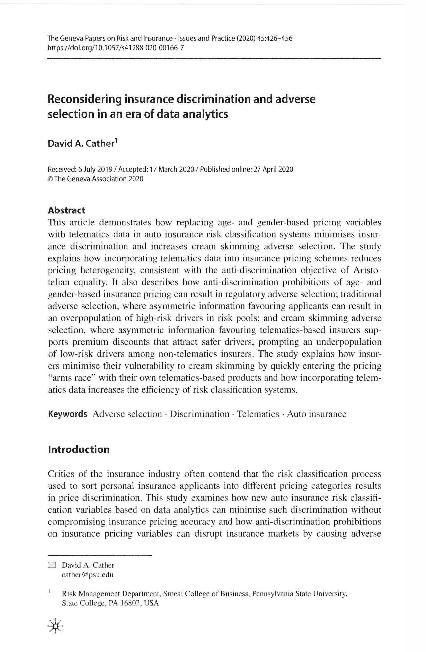pricing heterogeneity, consistent with the anti-discrimination objective of Aristotelian equality. It also describes how anti -discrimination prohibitions of age- and gender-based insurance pricing can result in regulatory adverse selection; traditional adverse selection, where asymmetric information favouring applicants can result in an overpopulation of high-risk drivers in risk pools; and cream skimming adverse selection, where asymmetric information favouring telematics-based insurers supports premium discounts that attract safer drivers, prompting an underpopulation of low-risk drivers among non-telematics insurers. The study explains how insurers minimise their vulnerability to cream skimming by quickly entering the pricing "arms race" with their own telematics-based products and how incorporating telematics data increases the efficiency of risk classification systems
Reconsidering insurance discrimination and adverse selection in an era of data analytics

Contenido multimedia no disponible por derechos de autor o por acceso restringido. Contacte con la institución para más información.
pricing heterogeneity, consistent with the anti-discrimination objective of Aristotelian equality. It also describes how anti -discrimination prohibitions of age- and gender-based insurance pricing can result in regulatory adverse selection; traditional adverse selection, where asymmetric information favouring applicants can result in an overpopulation of high-risk drivers in risk pools; and cream skimming adverse selection, where asymmetric information favouring telematics-based insurers supports premium discounts that attract safer drivers, prompting an underpopulation of low-risk drivers among non-telematics insurers. The study explains how insurers minimise their vulnerability to cream skimming by quickly entering the pricing "arms race" with their own telematics-based products and how incorporating telematics data increases the efficiency of risk classification systems

